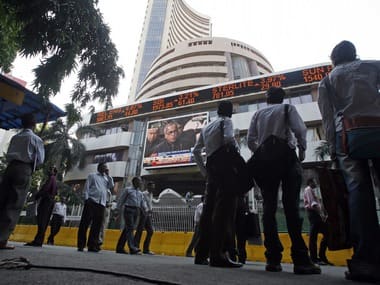On 20 December, the Indian stock market lost its trillion-dollar status. With the Bombay Stock Exchange’s market value of actively-traded stocks at Rs 52,43,357 crore and the rupee hovering at just under Rs 53 to the dollar, the market’s overall valuation fell below $1 trillion.
That, incidentally, is the good news. Here’s why.
Despite the slowdown, which could see GDP growth falling to around 7 percent this year, the total money value of India’s GDP will be around Rs 88-90 lakh crore. Whether it will hit the higher or lower band depends on where inflation is at the end of year. This means our GDP in dollar terms will be around $1.7 trillion in 2011-12.
The reason why this is good news is simple: if we take a 1:1 ratio between stock market valuation and GDP as appropriate for a growing economy like India, it means there is a 70 percent upside ahead for the stock market if things fall into place. The $1 trillion psychological turning point is a signal that we should start reinvesting in stocks.
[caption id=“attachment_161945” align=“alignleft” width=“380” caption=“This year, thanks to global uncertainties and risk-aversion, the share of stocks in household savings may be even lower than 5 percent of financial savings, with more money moving into bank deposits and safe avenues. Arko Datta/Reuters”]
 [/caption]
[/caption]
This does not mean the market-cap-to-GDP ratio will immediately spring back to 1:1 next year, but it does show the potential upside if we get our political act right and address our current state of extreme despondency.
Of course, things may get worse before they get better. According to CLSA , the rupee could still dive to Rs 60 to the dollar and the Sensex to 11,000-12,000. But if the markets were to hit that rock-bottom, they would have nowhere to go but up.
To see why there is scope for bullishness, let’s see how much the markets have fallen.
Between last year and now, the markets have fallen by around 25 percent. In the last six to eight months, the rupee has also declined 20-25 percent, depending on which period you take. That’s a drop for the market by nearly 50 percent in dollar terms.
If, as CLSA says, the market will fall a further 25 percent and the rupee a further 15-20 percent, it means the Indian markets will fall well below half our GDP value over the next few months.
Next, let’s factor in inflation. Between last year and now, inflation has eroded nearly 10 percent of the real value of stocks. Between now and mid-2012, another 5 percent erosion is a certainty, whatever happens to the actual inflation rate.
This effectively means the market will have risen 15 percent merely to return to its real value after adjusting for inflation. It will have to do another 50 percent scale-up to come back to its intrinsic value of a year ago. 2012 will clearly be the year in which the markets will have to start clawing back what they lost in 2011.
Will that happen?
My own understanding is yes, it will. But with two caveats.
First, unlike previous stock booms, which were largely led by foreign institutional investors, this time we will have to put more of our own money into stocks. Despite the vibrancy of our stock markets, Indians invest even less in stocks today than they did 20 years ago. Says Ashima Goyal of the Indira Gandhi Institute of Development Research: “After 20 years of financial reforms, the percentage of household financial savings in stocks and debentures, including through mutual funds, have shrunk from a pre-reform 20 percent to as low as 5 percent.”
In short, after 20 years of market reforms, our population has become more conservative in its investments.
This year, thanks to global uncertainties and risk-aversion, the share of stocks in household savings may be even lower than 5 percent of financial savings, with more money moving into bank deposits and safe avenues.
If the next stock boom will have to be led by greater domestic investment in shares, we need policy changes - including allowing greater freedom for provident and pension funds to invest in stocks. At current stock prices, these funds will mint huge profits if even 10 percent of their corpuses are invested in stocks.
Second, political uncertainty has to end sooner than later. The main reason why the markets are crashing (and the rupee, too) is the perception that UPA-2 has lost its way. Says Swaminathan Anklesaria Aiyar in his Swaminomics column in The Times of India: “The rupee’s fall is not a technical monetary phenomenon. Rather, it signifies a loss of confidence in India by foreign investors, and by Indians too.”
This is clear from our renewed love affair with gold - despite the metal’s high prices. In April-November 2011, Indians imported over $41 billion of gold and silver - which is over Rs 2,15,000 crore.
This risk-aversion among Indians can only be rectified by demonstrable action on the policy and governance front, or an early general election.
Else, we are done for. The market won’t revive till 2014 if we continue to stumble along in the next two years like we did in the last two.
)